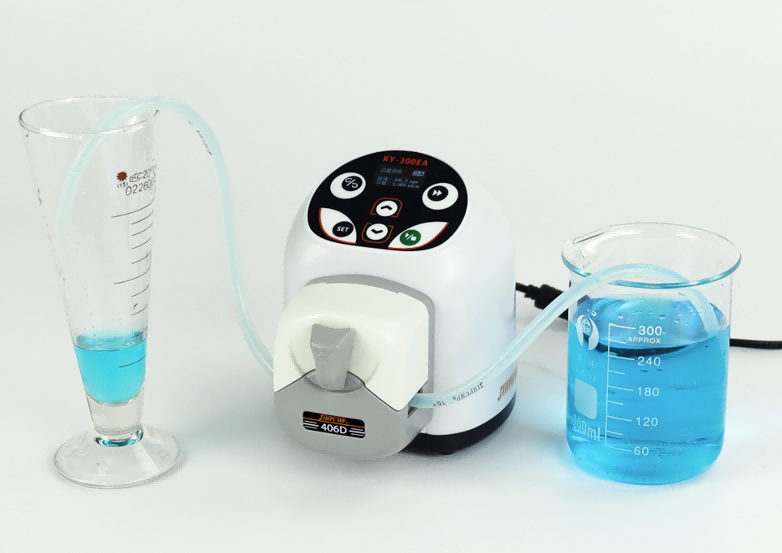Solutions for Pumping High-Temperature Fluids

Solutions for Pumping High-Temperature Fluids
Selecting the right pump technology for high-temperature fluids requires careful consideration, as each pump type has its own advantages and limitations under extreme thermal conditions. Below is an overview of the main pump types suitable for high-temperature applications.
1. Centrifugal Pumps
Centrifugal pumps are widely used for high-temperature applications. They operate by converting the kinetic energy generated by one or more rotating impellers into fluid motion. Depending on the materials used, centrifugal pumps can handle a broad range of temperatures. It is essential, however, to ensure that the pump casing and other components are made from materials that can withstand the specific fluid temperature.
2. Positive Displacement Pumps
This category includes gear pumps, screw pumps, and Roots pumps, which are ideal for applications requiring stable flow rates regardless of pressure conditions and can handle high-temperature fluids effectively.
Gear Pumps: These pumps use meshing gears to move fluid by volume displacement, adapting well to viscosity changes caused by temperature fluctuations.
Screw Pumps: These pumps employ two or more intermeshing screws to gently move fluid, providing stable output with minimal shear, which is beneficial for sensitive or viscous high-temperature fluids.
Roots Pumps: Similar in principle to gear pumps but using lobed rotors instead of gears, Roots pumps offer high efficiency and can handle temperature variations effectively.
3. Magnetic Drive Pumps
Magnetic drive pumps are ideal for high-temperature applications due to their seal-less design. Torque is transmitted to the impeller via a magnetic coupling, significantly reducing the risk of fluid leakage or contact with the atmosphere. This makes them safe for handling hazardous or high-temperature fluids.
4. Peristaltic (Hose) Pumps
Also known as hose pumps, peristaltic pumps are suitable for a wide variety of high-temperature fluids without causing wear or damage to pump components. Fluid is contained within a flexible hose inside a circular pump casing, and a rotor compresses the hose to move the fluid. This design ensures complete separation between the fluid and pump components, making it ideal for high-purity applications and minimizing cross-contamination risks.
Material Selection and Compatibility
Selecting materials that can withstand high temperatures and resist aging is critical for high-temperature fluid pumping. Material compatibility prevents chemical degradation, corrosion, and pump system failures. Key considerations include:
1. Metals
Common metals for high-temperature pumps include stainless steel, Hastelloy, titanium, and nickel-based alloys. Each has unique properties regarding temperature resistance, corrosion resistance, and chemical durability.
Stainless Steel: Good durability, cost-effective, suitable for temperatures up to ~400°C; widely used in water, wastewater, and some chemical processes.
Hastelloy: Excellent corrosion resistance and chemical stability, suitable up to ~1,200°C.
Titanium Alloys: Outstanding strength-to-weight ratio and corrosion resistance, suitable up to ~538°C.
Nickel-Based Alloys: Superior oxidation and corrosion resistance, usable up to ~1,200°C.
2. Ceramics
In high-temperature conditions where metals may fail, ceramics like zirconia (ZrO₂) and silicon carbide (SiC) offer excellent heat resistance, wear resistance, and chemical stability. Their low thermal expansion and high hardness make them ideal for pump components such as sliding bearings and sealing faces.
3. Plastics and Composites
High-performance plastics such as PTFE (Teflon) and other fluoropolymers can be used for high-temperature pump components. While generally less heat-resistant than metals, these materials offer excellent corrosion resistance and are suitable for moderate temperature or ultra-pure fluid applications.
Understanding the interaction between pump materials and the fluid, including thermal expansion, potential galvanic corrosion, and mechanical properties at operating temperatures, is crucial for reliable, long-term operation. Regular monitoring and evaluation are recommended to prevent compatibility issues and ensure safe, efficient performance.
Maintenance Strategies for High-Temperature Applications
Proper maintenance is critical to prolonging pump life and ensuring efficient operation under high-temperature conditions. Elevated thermal stress can accelerate wear, requiring targeted maintenance strategies:
1. Regular Inspection and Monitoring
Inspect seals, bearings, gaskets, and other pump components regularly. High temperatures accelerate aging compared to normal conditions.
Use condition monitoring tools such as temperature and vibration sensors to detect early signs of abnormal operation or impending failure.
2. Lubrication Management
Lubricants play a key role in reducing friction and wear:
Use lubricants designed specifically for high-temperature environments to maintain viscosity and performance.
Replace and analyze lubricants regularly to ensure effectiveness and monitor for contamination or degradation.
3. Thermal Stress Management
High-temperature pumps are susceptible to thermal expansion and related stresses:
Install expansion joints or stress-relief components to accommodate thermal expansion.
Ensure piping layouts have some flexibility to reduce load and torque on the pump casing.
4. Cooling Systems
When applicable, cooling systems help control internal and external pump temperatures:
Consider external or internal water-cooling systems, especially when operating temperatures approach material limits.
Maintain cooling systems regularly to prevent overheating due to malfunctions.
5. Preventive Maintenance
Planned preventive maintenance significantly extends pump life and avoids unplanned downtime:
Develop and strictly follow a preventive maintenance schedule based on manufacturer recommendations and operational experience.
Include replacement of wear parts, alignment checks, and thorough cleaning of cooling lines and filters.
6. Technical Training
Operator training is critical for managing high-temperature pumps:
Conduct regular training on proper operation, emergency procedures, and safety practices in high-temperature environments.
Update training materials to reflect the latest industry practices and technological advancements.
By implementing these strategies — including detailed monitoring, maintenance, and operator training — industrial facilities can maximize the reliability, efficiency, and safety of high-temperature pumping systems while extending equipment life and minimizing costly downtime.
- Art
- Causes
- Crafts
- Dance
- Drinks
- Film
- Fitness
- Food
- Jeux
- Gardening
- Health
- Domicile
- Literature
- Music
- Networking
- Autre
- Party
- Religion
- Shopping
- Sports
- Theater
- Wellness


